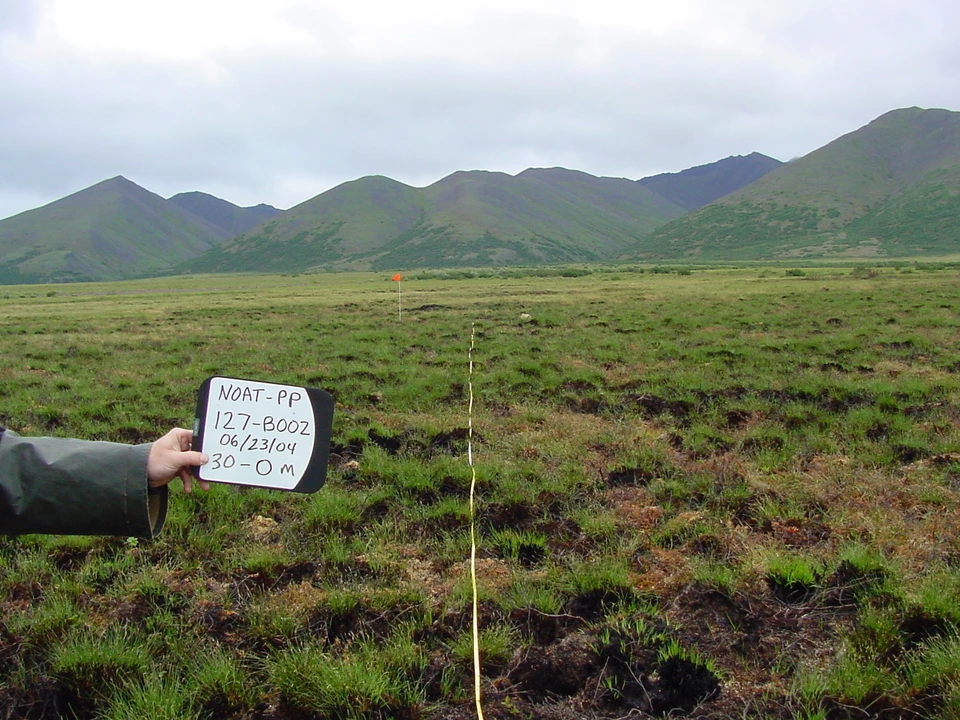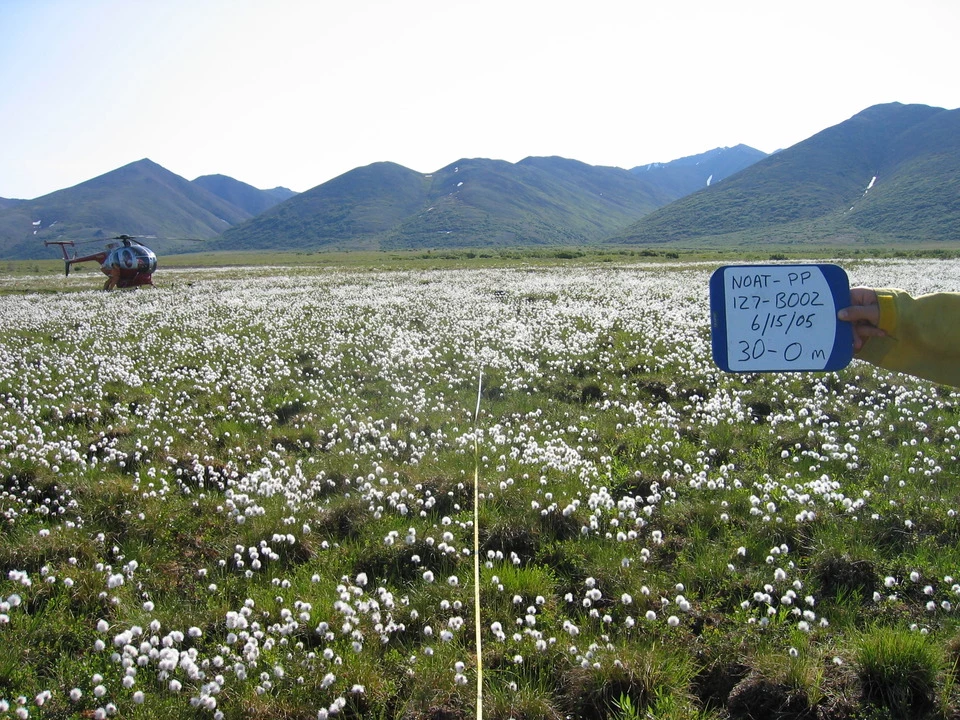|
Fire is an important agent of change in many of Denali’s ecosystems. It is a naturally occurring disturbance to many plant communities. Fire breathes new life and vigor into aging ecosystems and processes. How often fire returns to a landscape is unique to each ecosystem. In Denali, there are three types of fire-adapted ecosystems, each with their own relationship with fire. 
In tussock-shrub tundra, mosses, lichens, grass-like plants, and dwarf-shrubs dominate the landscape. Here, wildfire occurs every 200 – 10,000 years. Wildfires are usually wind driven and spread at a high rate of speed, consuming just the recent years’ accumulation of tussock grass. However, when fire returns to the landscape more frequently, organic matter built up over decades may be consumed, with potential to instigate major change in these systems. In boreal forest dominated by Black and White Spruce, wildfires generally occur every 60-100 years. The type and arrangement of vegetation in these forests causes them to burn with high intensity. Fire effects in these forests are often severe, sometimes killing most of the overstory trees in what is called a "stand-replacing fire". The short-and long-term effects of such fires can be dramatic but breathe new life into these systems. In mixed spruce and deciduous boreal forests, species like birch and poplar mix with spruce, and fire occurs less frequently, every 100-300 years. Deciduous trees often slow down the spread of wildfires, or moderate their severity, due to the higher moisture content in their leaves. Deep Dive: A Look at Fire EffectsFires are quick to change a landscape. But being fire-adapted, these ecosystems also can be quick to recover. Fire adaptations come in many forms. Many plants in these systems are adapted to resprout directly from their burned stems. Black and White Spruce, with semi-serotinous cones that release seeds when a fire passes through, are efficient at re-seeding themselves after fire. Woody material consumed by fire deposits valuable nutrients when it falls as ash. Deciduous species like willow may especially benefit from the flush of nutrients released in burning, and support more nutritious leafy growth in the following season. Wildlife, like moose, can benefit from the improved habitat and food source wildfire provides. The duff layer, composed of built-up organic matter, may also be consumed in fire, releasing more nutrients into the soil. Tussock- Shrub Tundra Two Weeks Post Fire ➔ One Year Post Fire 

Left image
Right image
Changes to Patterns of FireDespite adaptation to fire, changes in fire frequency, severity, or fire behavior have consequences to Denali’s ecosystems. Increases in fire frequency may be too much for even fire-adapted species to handle and lead to a shift in vegetation composition and changes to biodiversity. Fire plays a role in regulating permafrost. Absence of fire allows organic matter to accumulate. Thick organic mats act as a blanket to insulate deeper soil layers from the summer sun. Since Denali has longer winters than summers, this means thick organic mats lead to permanently frozen soils and decreases in ecosystem productivity. Fire consumes built-up organic matter, elicits warming of the soil, and rejuvenates boreal systems. Fires that burn too intensely, or severely, could lead to the degradation of permafrost or the destruction of ancient organic matter layers, both of which are crucial for maintaining soil stability and storing carbon. Changes to soil conditions also have cascading effects on lake chemistry and aquatic systems that may extend beyond the fire’s footprint. Spruce Forest Before Fire ➔ One Year After➔ Six Years After Fire
NPS Photo This photo set demonstrates change in boreal spruce forest after fire. The photo on the left shows a forest area that hadn’t burned in many years. By chance, a few weeks after this photo was taken and plants measured, it burned in Highpower Fire (2005). The center photo shows the area one year after the fire. The photo on the right, taken in 2011, shows forest regrowth and recovery six years post-fire. Fire is a natural part of the cycle of Alaska's ecosystems. It provides renewal and change to the species that call these biomes home. Repeated photographs can be a valuable tool for exploring pre- and post-fire conditions. In addition to the photo sets featured above, explore the album below for more photos that highlight succession change after fire. |
Last updated: May 23, 2025
